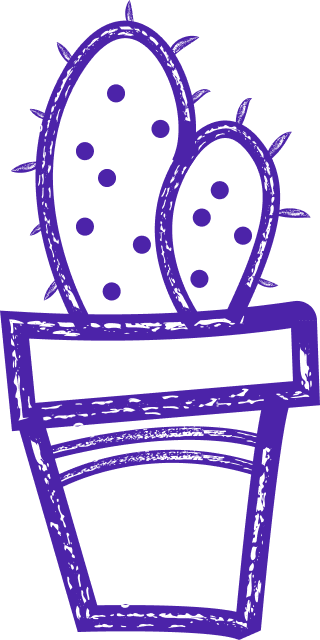
fallback
Fallback Strategies: Ensuring Continuity and User Satisfaction Across Domains
Fallback refers to a contingency plan or alternative solution that is implemented when the primary option is not available or fails to function properly. In various domains such as technology, business, and design, fallbacks are commonly employed to ensure uninterrupted operations and maintain a seamless user experience. A fallback can also act as a reserve option or support system when the primary plan fails.
Introduction to Contingency Planning
Contingency planning is a vital part of strategic management, designed to prepare individuals and organizations for unexpected setbacks by establishing alternative plans or fallback positions. When the primary plan encounters a break or failure, having a fallback plan allows you to fall back on a secondary option, minimizing disruption and ensuring continuity. For example, professionals often consider a fallback career as a kind of safety net, ready to turn to if their main career path is interrupted.
Developing an effective fallback strategy starts with identifying potential risks, evaluating their likelihood and impact, and crafting alternative solutions to address them. This proactive approach means that, in the event of a fall or failure, you have a clear path forward—whether that means switching to a fallback position in business, adopting a new tactic in the face of a strong enemy, or regrouping after a setback. The use of phrasal verbs like “fall back” and “turn to” captures this process of shifting to an alternative when needed.
The concept of fallback is not limited to one field. In military contexts, for instance, troops may fall back to a more defensible position, giving them time to regroup and reassess their strategy. This idea is echoed in various cultures and languages, including French, German, Polish, and Chinese, where having a fallback plan is recognized as a smart way to manage risk and maintain progress.
Ultimately, having a fallback position in place acts as a kind of backup, allowing you to fall back, regroup, and move forward with confidence. By investing time in contingency planning and developing strong fallback strategies, you can reduce the risk of falling behind and achieve greater success, no matter what challenges arise.
Technology Fallback Plan
In the realm of technology, fallbacks are extensively used to mitigate potential risks and enhance reliability. For instance, in software development, a fallback mechanism can be implemented to handle errors or exceptions that may occur during program execution. This allows the software to gracefully recover from unexpected failures and continue functioning instead of crashing or producing incorrect results.
Similarly, in network infrastructure, fallbacks are essential to ensure uninterrupted connectivity. Redundant systems, such as backup servers or alternative routing paths, are set up to automatically take over in case of primary system failures. This redundancy ensures that users can still access the services or information they require, minimizing downtime and maintaining a high level of service availability.
Business Fallback Career
In the business world, fallback strategies are crucial for risk management and contingency planning. Organizations often develop fallback plans to address potential disruptions in their operations, such as natural disasters, supply chain interruptions, or financial crises. These plans outline alternative courses of action, allowing businesses to quickly adapt and recover from unexpected situations.
For instance, a company may have a fallback supplier in place to ensure the availability of critical materials or components if their primary supplier experiences difficulties. This fallback supplier can be activated swiftly to prevent production delays or stock shortages, safeguarding the company's ability to meet customer demand and maintain a competitive edge.
Design Fallback
In the realm of design, fallbacks are commonly employed to ensure consistent experiences across different platforms and devices. One notable example is font fallbacks in web design. When a particular font specified for a webpage is not available on a user's device, a fallback font is automatically used instead. This ensures that the content remains readable and the design remains intact, regardless of the user's device or font availability.
Another design-related use case for fallbacks is responsive web design. Fallbacks are employed to cater to devices with limited capabilities or older browsers that may not support certain design elements or technologies. By providing alternative design solutions or simplified versions of the website, designers can ensure that users on various devices still have a satisfactory browsing experience.
SEO Benefits of Fallbacks
Implementing fallbacks can also have significant SEO benefits. When it comes to multimedia content, such as images or videos, fallbacks play a crucial role in optimizing search engine visibility. By providing alternative text descriptions or captions, search engines can better understand the content and index it appropriately. This helps improve the chances of the content appearing in relevant search results, increasing its discoverability and driving organic traffic to the website.
Additionally, fallbacks can contribute to improved website performance and user experience, both of which are important factors for search engine rankings. By utilizing fallback mechanisms, such as compressed images or lightweight design alternatives, websites can load faster and provide a smoother browsing experience. This positively impacts user satisfaction and engagement, which search engines consider when determining the relevance and quality of a website.
In conclusion
Fallbacks are essential components of various domains, serving as contingency plans, alternative solutions, and risk mitigation strategies. Whether in technology, business, or design, fallbacks ensure continuity, reliability, and user satisfaction. By implementing fallback mechanisms, organizations can navigate unexpected challenges, maintain seamless operations, and optimize their online presence for search engines.
Let’s build your next digital product — faster, safer, smarter.
Book a free consultationWork with a team trusted by top-tier companies.








